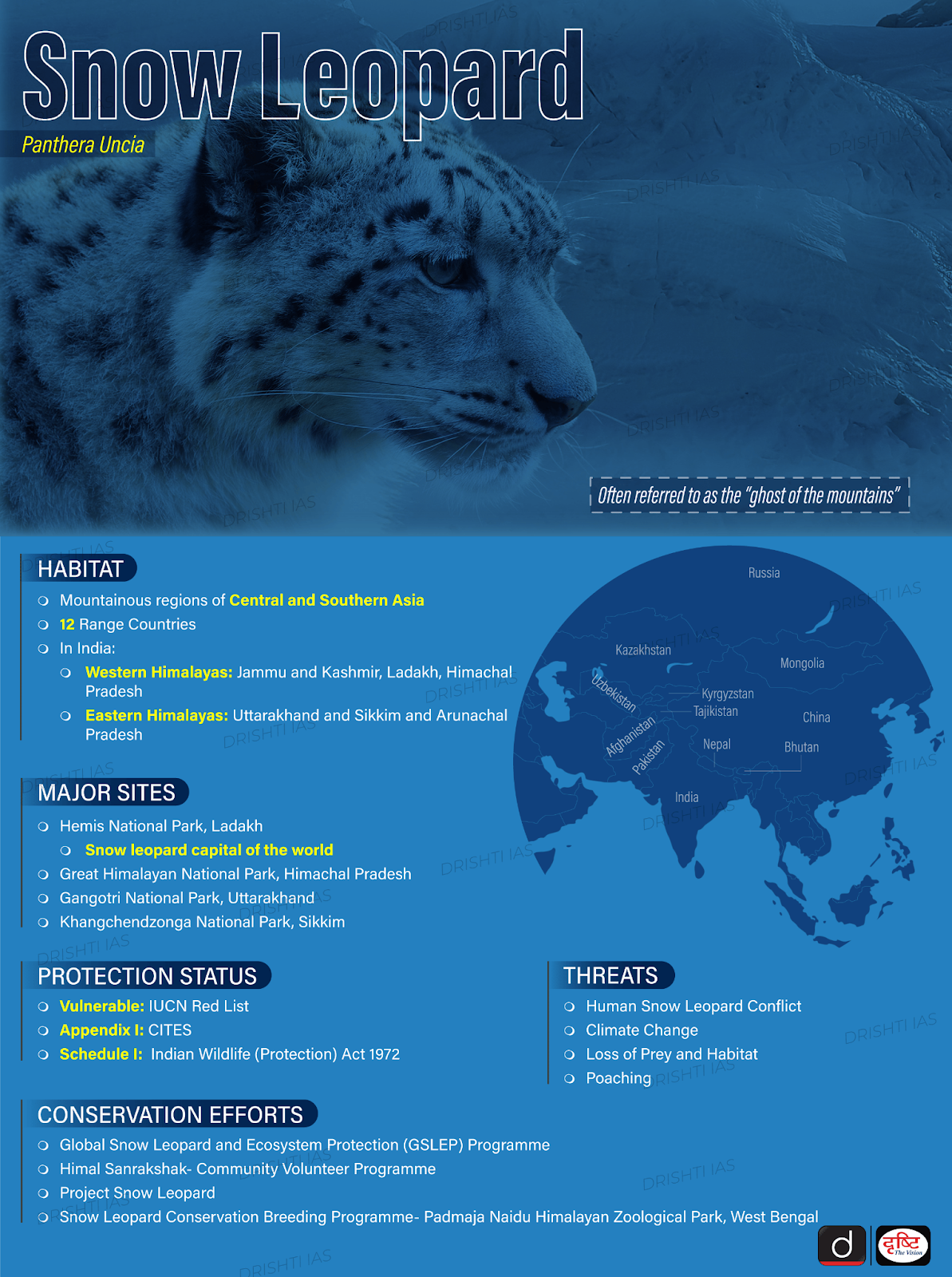Important Facts For Prelims
Snow Leopards
- 15 May 2024
- 3 min read
Why in News?
Recently there was a significant discovery of snow leopards in the Kishtwar High Altitude National Park of Jammu and Kashmir's Chenab Valley region by a team of scientists.
- This discovery holds importance for snow leopard conservation in India, shedding light on a lesser-known population of this apex predator.
Why is the Sighting Significant?
- Importance of the Discovery:
- Snow leopards are highlighted as an apex predator and a flagship species of High Mountain Asia.
- India's role as home to 2% of the global snow leopard range emphasizes the importance of conservation efforts.
- The occupancy and abundance of the snow leopard is poorly known across its range in India.
- India is home to 718 snow leopards, most of whom live in areas that are not under legal protection.
- Population surveys in the Western Himalayas have been limited to Ladakh, Himachal Pradesh and Uttarakhand.
- Findings:
- Snow leopards were found at altitudes ranging from 3,004 to 3,878 meters.
- This is mostly an arid alpine region above the treeline, with steep and rugged terrain flanked by high-altitude pastures of junipers, grasses, and legumes on rolling hills.
- Anthropogenic pressure, particularly from livestock grazing, was observed in certain catchments, posing threats to habitat and prey availability.
- This could lead to human-wildlife conflict and drive the snow leopard and its prey into suboptimal areas, thus exposing them to other threats.
- Snow leopards were found at altitudes ranging from 3,004 to 3,878 meters.
What are the Characteristics of Snow Leopard?
- Some Key Facts:
- Physical Features
- Height: 55-65 cm (22 – 26 inches)
- Length: 90 – 115 cm (36 – 44 inches)
- Its extra large paws act like a pair of natural snow shoes preventing the cat from sinking into the snow.
- Its round, short ears reduce heat loss, and the wide, short nasal cavity warms the air before it reaches the cat’s lungs.
- The cat has strong, short front limbs and longer hind limbs helping launch the cat up to 30 feet (10 meters) in one leap.
- Its extra long tail helps the cat keep its balance and provides extra warmth when it’s wrapped around the body.
- Unlike other big cats, snow leopards can't roar.
- Despite being called the snow 'leopard', this big cat is more closely related to the tiger than the leopard.
- Physical Features
UPSC Civil Services Examination, Previous Year Questions (PYQs)
Prelims
Q. Which one of the following National Parks lies completely in the temperate alpine zone? (2019)
(a) Manas National Park
(b) Namdapha National Park
(c) Neora Valley National Park
(d) Valley of Flowers National Park
Ans: (d)








